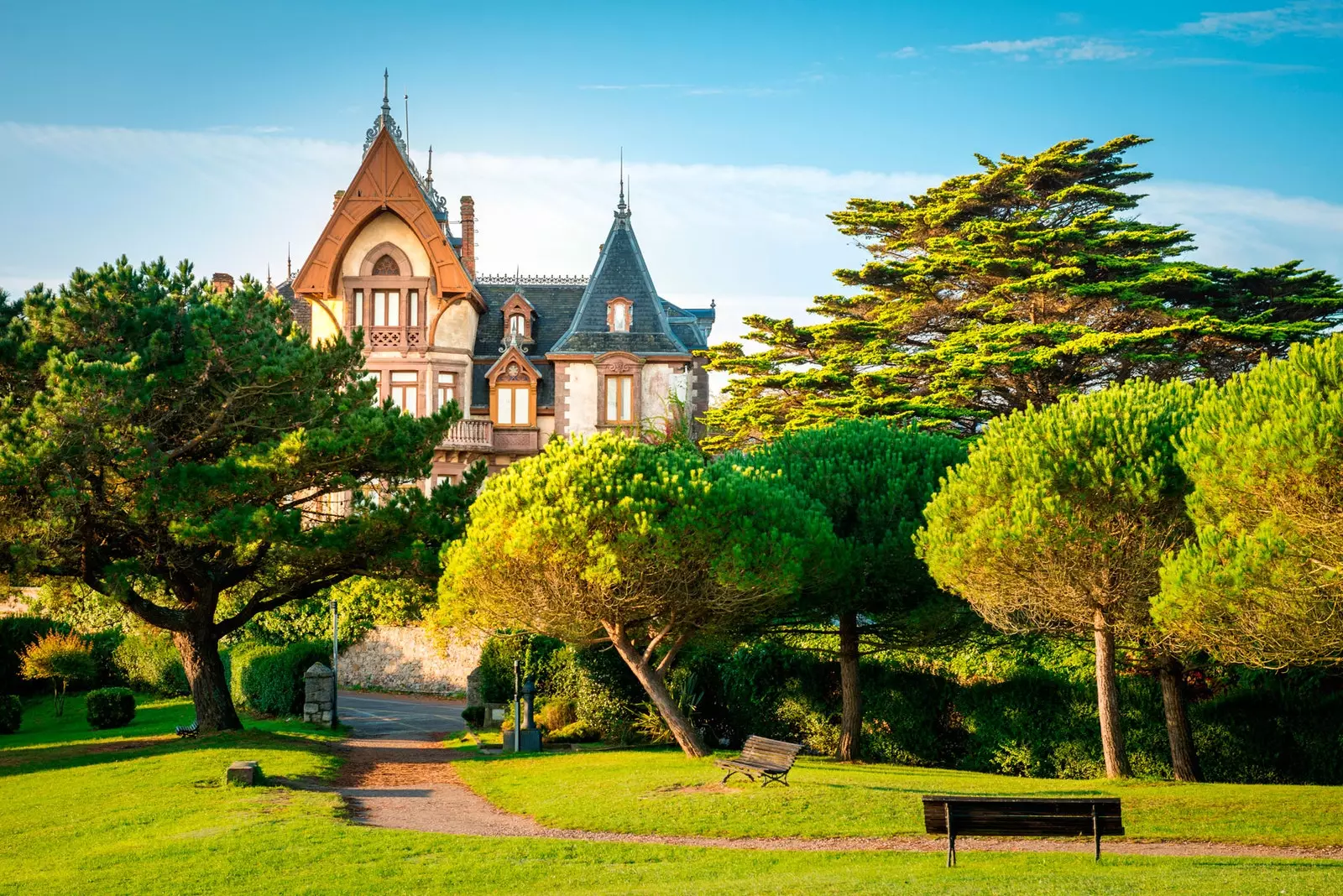
Comillas, the modernist dream of a marquis
Once upon a time there was a humble young man who , for aspiring to a better life than the one he had in his beloved Cantabria, emigrated to Cuba in search of a future.
It was the 19th century, he was 14 years old at the time, and he did so well in the Caribbean lands that on his return to his homeland he decided to show his countrymen the great fortune he had reaped. And hey, he did. And also, in a big way.
The protagonist of this story is Antonio López y López, first Marquis of Comillas –Title granted by Alfonso XII himself for his contribution during the Cuban insurrection– and responsible for having transformed the town where he was born, always dedicated to fishing, into an ode to modernism.
An authentic open-air museum full of fascinating buildings signed by the most acclaimed modernist architects of the time: exuberant monuments that today attract the curious and tourists from the most diverse points of the map.
Thus, thanks to his initiative, it was like names of the caliber of Lluís Domènech i Montaner, Joan Martorell or Gaudí himself ended up leaving their mark throughout Comillas. A display of ingenuity and talent to discover in a quiet walk through the town that we are here to talk about today.
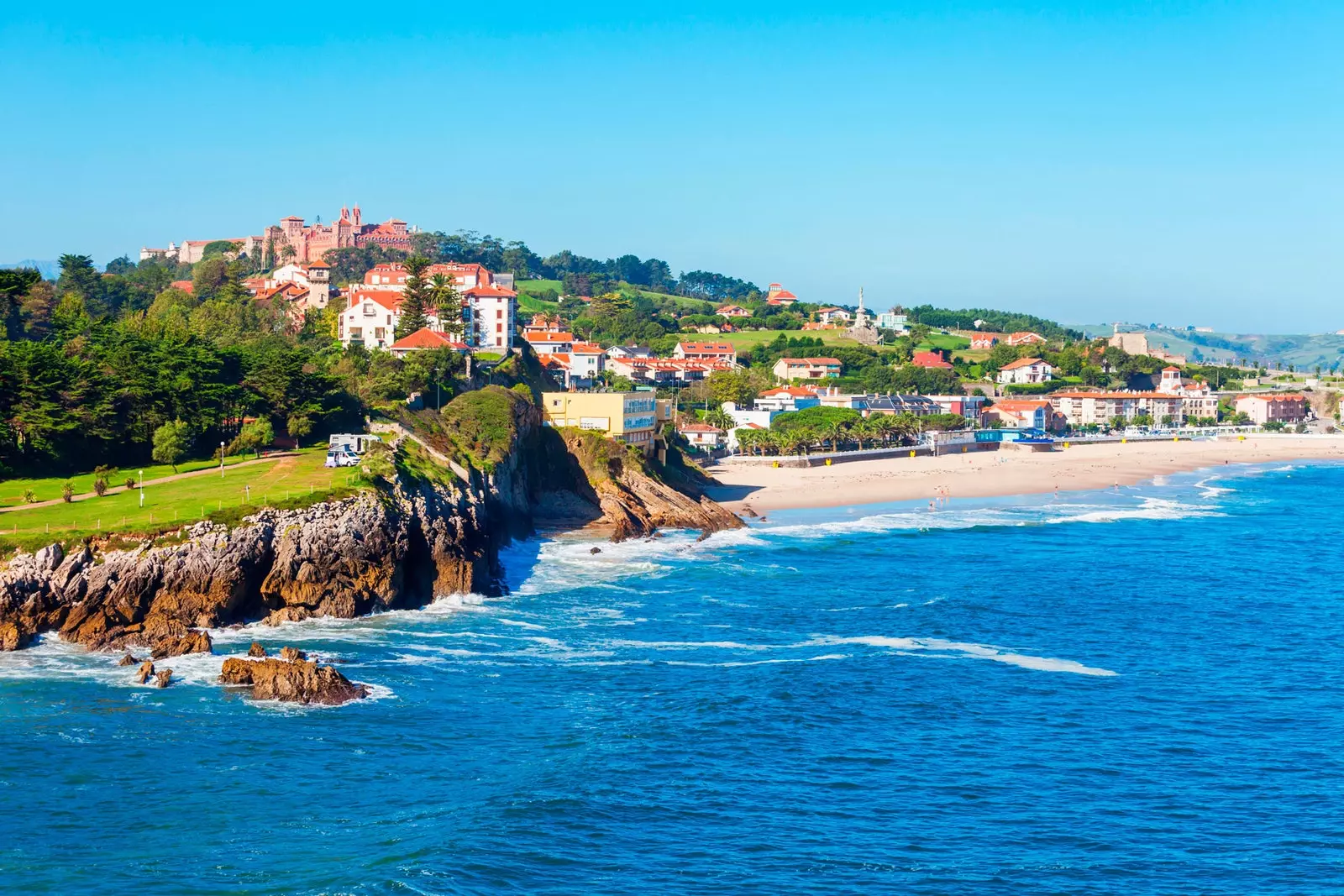
Comillas, a fishing village with a wonderful whim
BEACH VIEW TO START
But first, let's soak up the essence of this beautiful enclave. After all, the fact of living facing the sea has always marked the character of Comillas, so in the Cantabrian we stand.
We are going to walk along its promenade, to feel the saltpeter that we like so much on our skin and to admire how the waves break against its immense shore. Hey, and why not: to have a vermucillo in one of its lively bars with views.
It is right there, on one side, where the monument to the sardines, great protagonists of the most seafaring side of the town.
From here, now that summer is still far away, everything is calm, although things change when the heat begins to tighten: Already in the 19th century, the fishing village of Comillas was transformed into a seaside resort chosen by people of high rank to spend your summer vacation.
And how, when and why the change? It all started when The Marquis managed that in the summer of 1881 the residents of Comillas had a guest as distinguished as King Alfonso XII himself , who decided to spend her summer vacations in such a beautiful villa, drawing attention to her from the country's aristocracy.
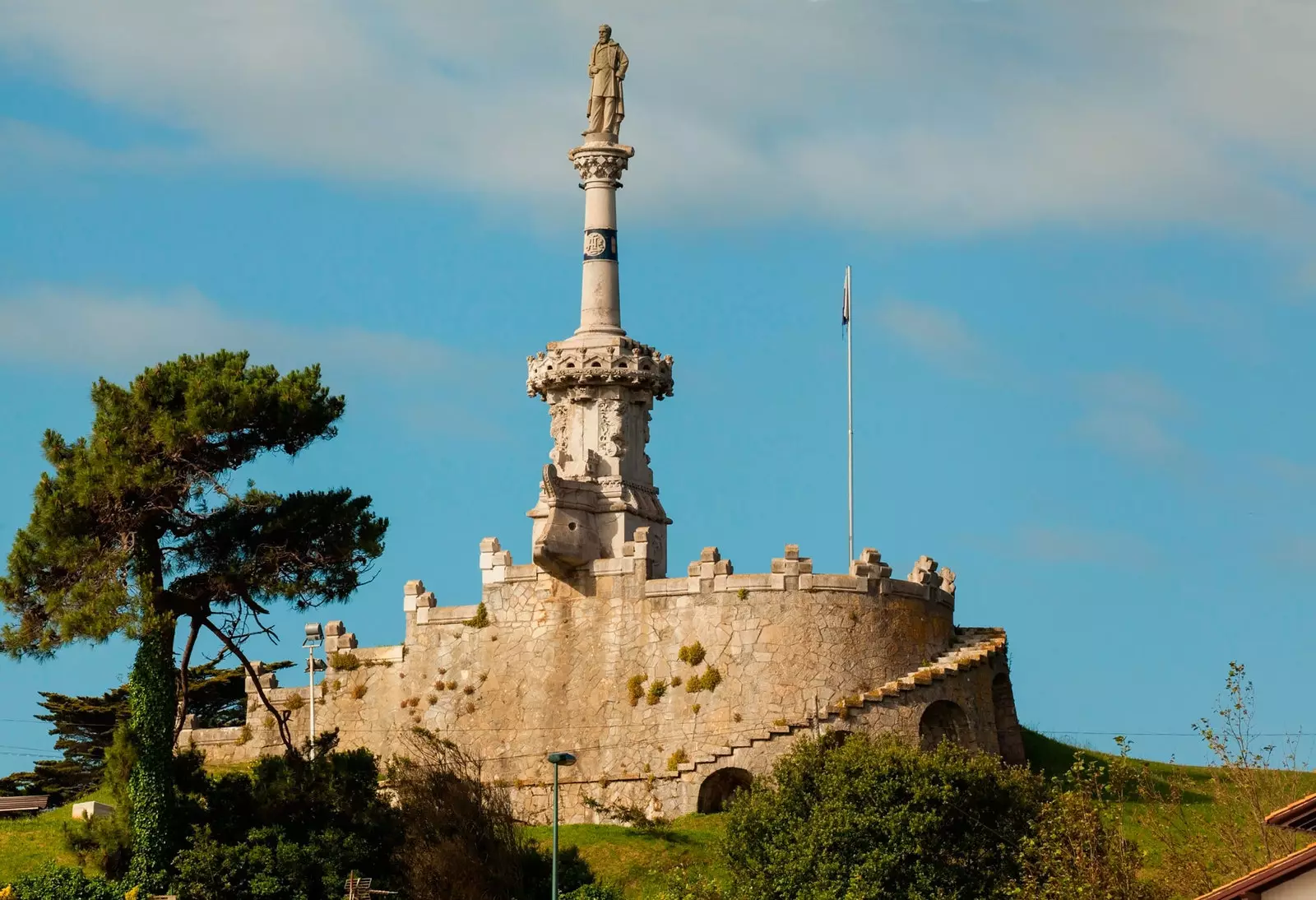
The statue of the Marquis at the top of the hill
AND NOW... SHALL WE SALUTE THE MARQUIS?
Come on, come on, let's go say "hello", The poor guy watches us alone and bored from the top of the hill. Yes, the one that can be seen from the same promenade.
It is there, at the top, where the enormous column rises in homage to those who really wanted and knew how to change the future of the town's history.
work of the great Lluís Domenech i Montaner , was erected on this point, as if it were the prow of a ship, in 1890. The views from it are spectacular. with the Bay of Biscay in front and the town of Comillas to one side.
What captures our attention, however, is another very different enclave: the neighboring modernist cemetery, which with its immense angel conquering the entrance, inevitably becomes our next stop.
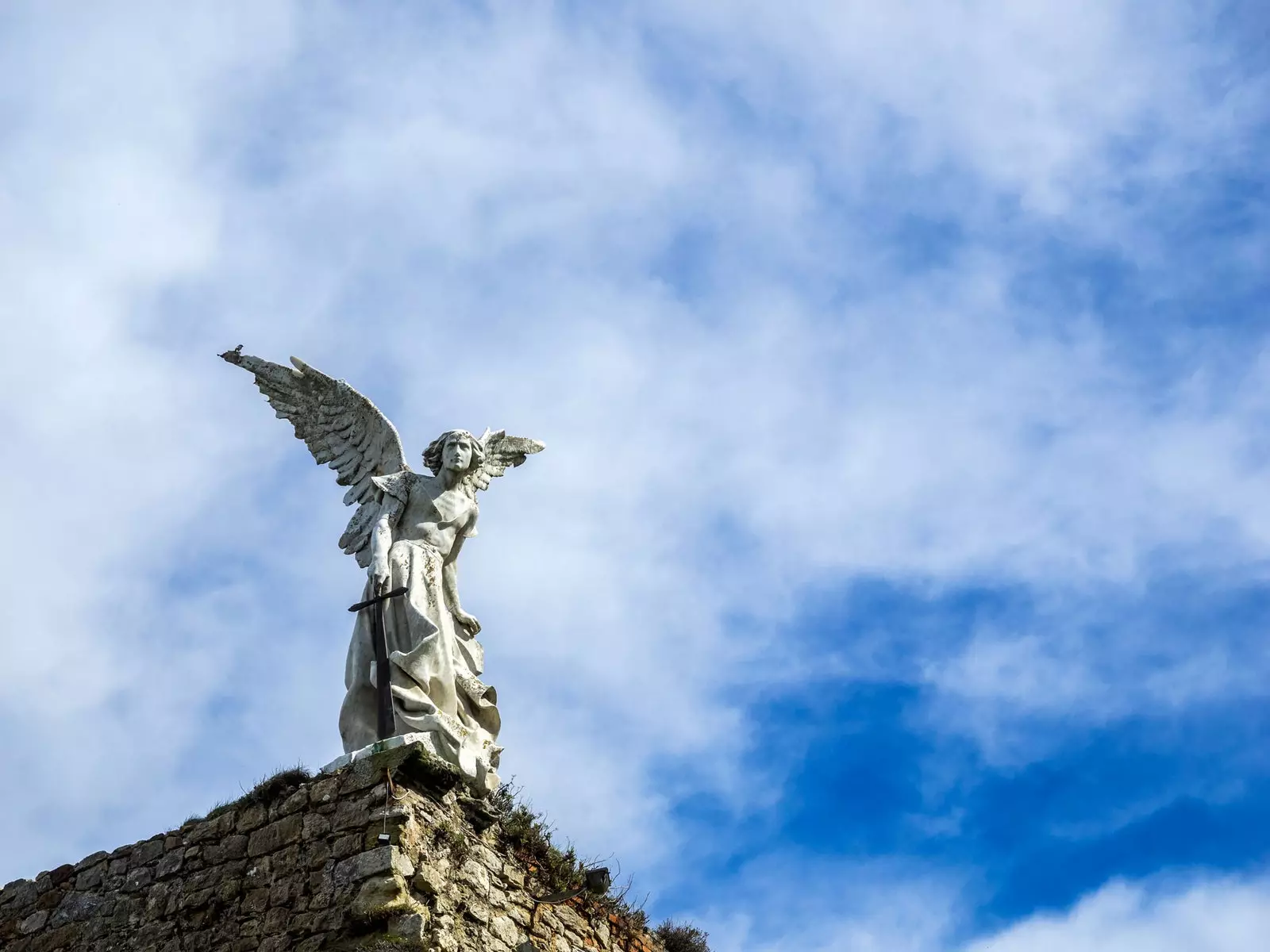
The Guardian Angel presiding over the entrance to the cemetery
A walk along the road takes us to the access gate: once in front of her, we were left speechless.
Montaner is again the protagonist here, who was entrusted with the complicated task of take the Gothic ruins of the old cemetery to give them, without losing their essence, a clear modernist character. And he did it, boy did he do it!
And he did it by adding to the structure a handful of the most peculiar elements such as pinnacles, crosses or the access arch.
The family pantheon Don Joaquin de Pielago , which by the way is spectacular and is quite a surprise when you walk through the interior corridors of the enclosure, is from Llimona , like the Guardian Angel, who finishes off and leads the space from the top from the walls of the old church. Illuminated at nightfall, the sight of him is absolutely magical.
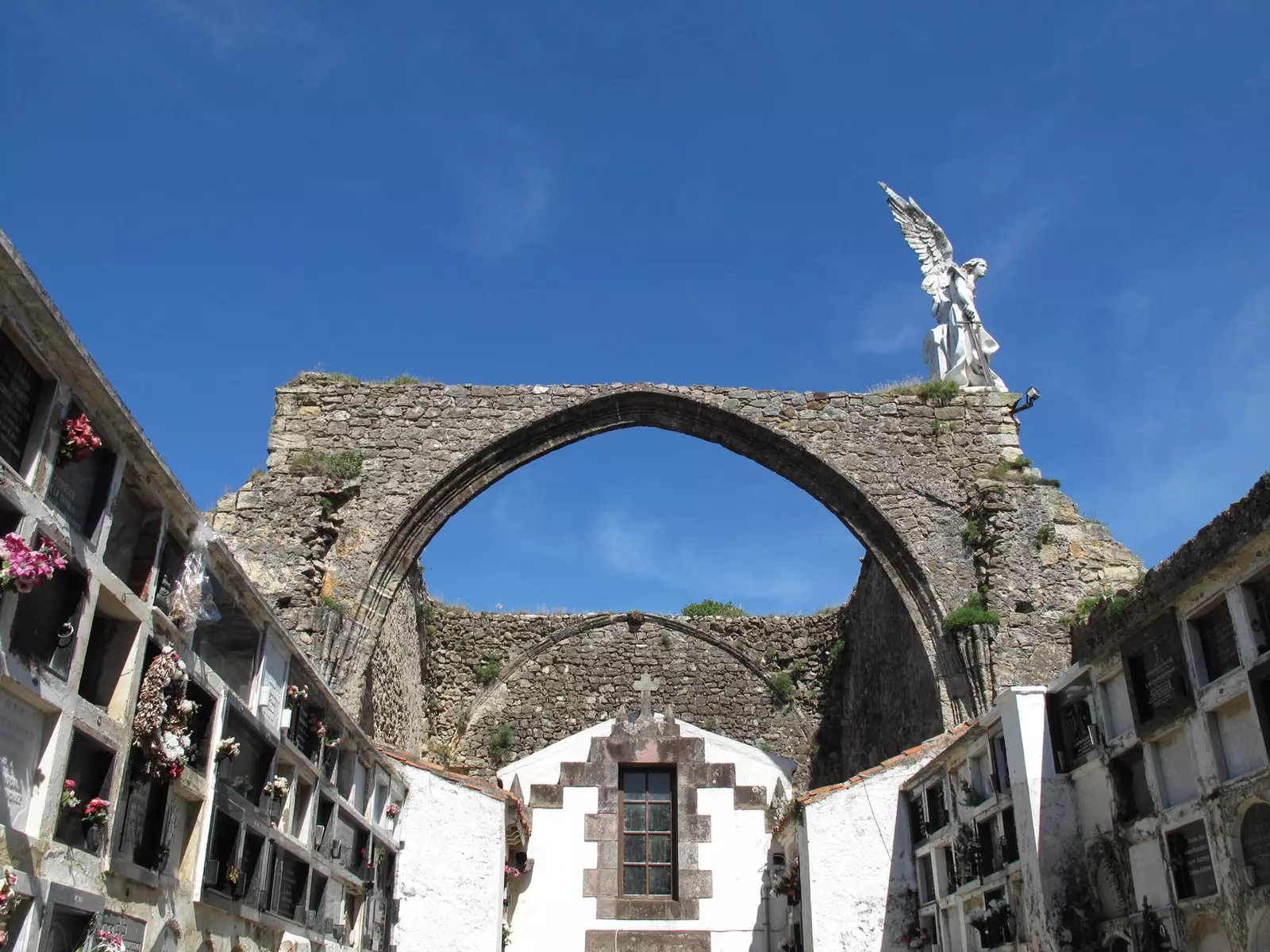
The old modernist cemetery of Comillas
THE GREATEST JEWELS OF COMILLAS
But there are three buildings that have become, without remedy and due to their splendor, the stars of this modernist route that takes us today through the fishing village. They are, after all, the main culprits that thousands of tourists come to these parts every year.
The first of them is him Palace of Sobrellano. Or, what is or itself: the summer home that the First Marquis of Comillas had built on his old house, opened in 1888.
Built in a most eclectic style –dominated, yes, by the neo-gothic–, it was Joan Martorell, on this occasion, in charge of projecting this imposing work that leaves no one indifferent.
And why is this so? Well, let's see: maybe for its elegant Venetian-style windows, for the reliefs on its façade or for its imposing rooms , in which the great central marble staircase, the billiard room or, above all –and above all–, the great throne room , with some stained glass windows that some of the most important cathedrals already wanted for themselves.
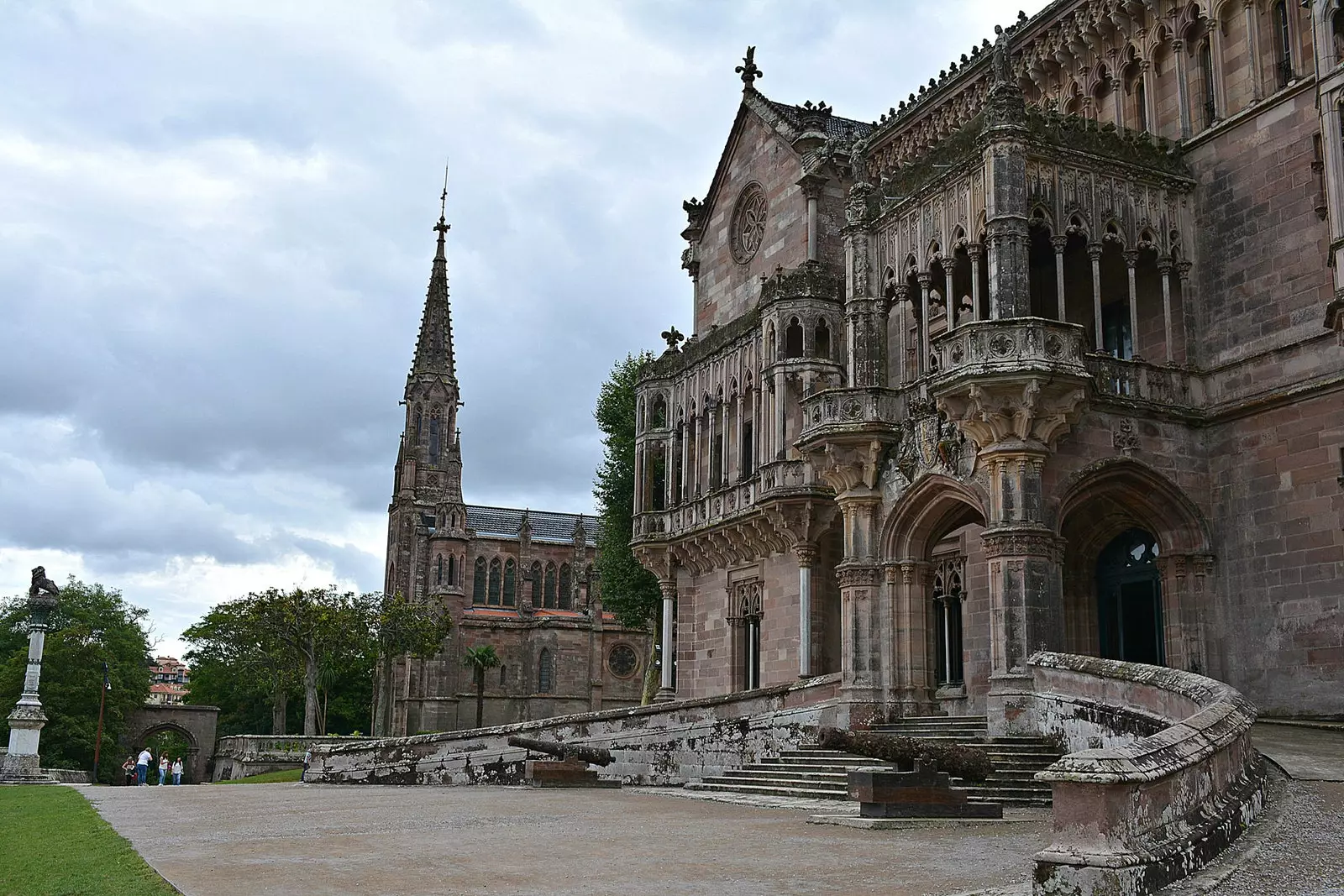
Main facade of the Palacio de Sobrellano
Exploring its interior on one of the guided tours that can be taken throughout the year, catch your eye the decoration, which by the way – of course – also came from the inspiration of modernist architects such as Eduardo Llorens or Gaudí. Exuberant architecture where they exist.
By the way! Next to the palace, another noteworthy building: the chapel-pantheon, where the remains of the different members of the family rest. The pews or the confessional are the work –attention– of the very Gaudi.
Although, if we talk about Gaudí, there is no doubt: we must walk a few more steps and thus reach his great masterpiece.
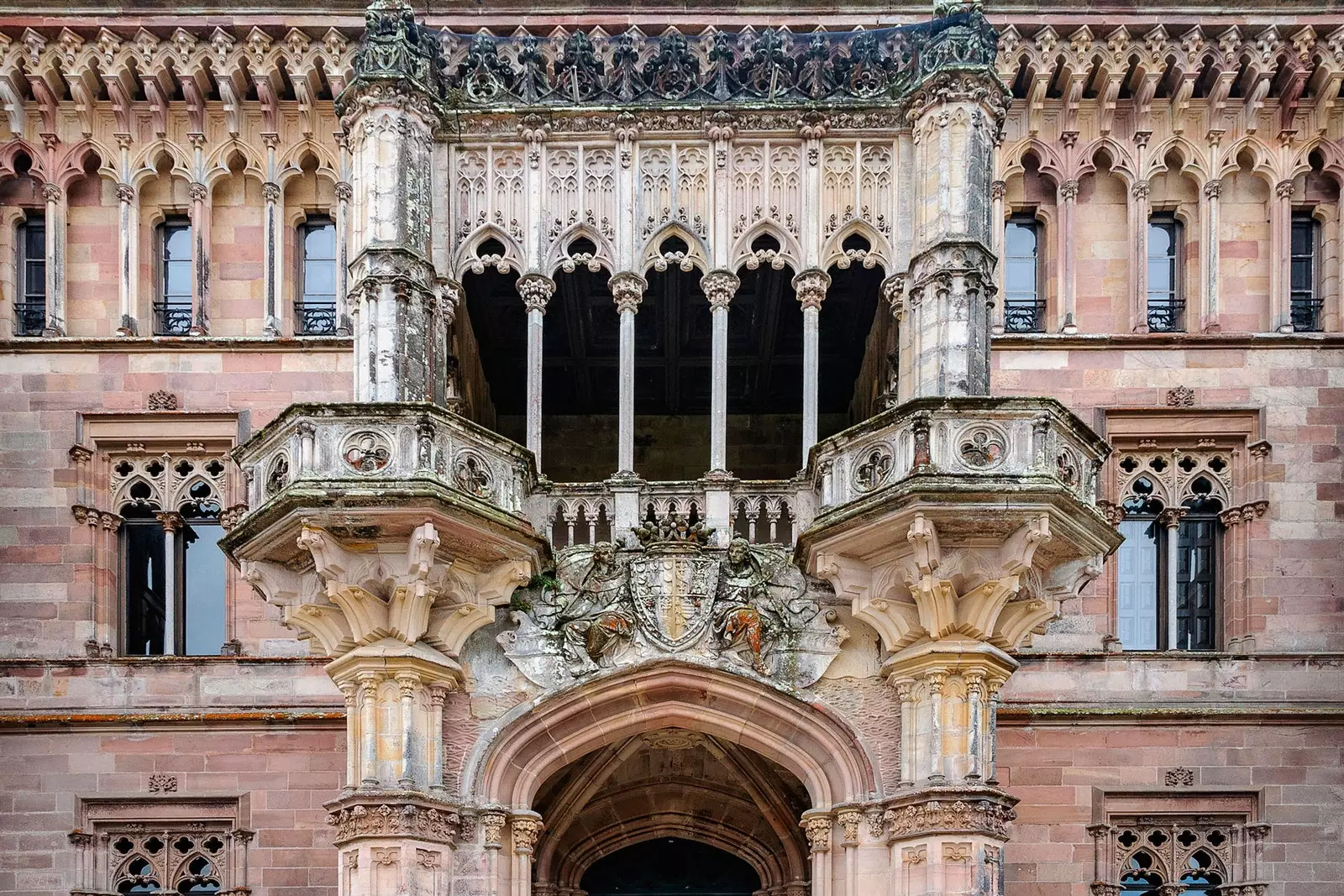
The summer home that the First Marquis of Comillas had built on his old house
WE DIE FOR GAUDÍ...
Exact. We die. And we do it by overdose of beauty. Because Gaudí's Caprice –we can't think of a better name– is inspiration, spark, ingenuity and, ultimately, pure fantasy. well and also the recreation house of the brother-in-law of the Marquis.
And you just have to take a first look at it, even if it's on the outside, to feel that we are in a special place... Or is it to Hansel and Gretel's chocolate house?
And we look at his tower, that rises towards the sky as if wrapped in magic; in its beautiful tiles with reliefs of sunflowers –a nod to the sustainable point of the mansion, whose rooms are all designed to take advantage of sunlight as much as possible–; in its facade of rounded shapes and also in the lines and layouts so marked by Gaudí in the interior.
The Catalan architect breaks rules again. To give a surreal touch to his work. How lucky Comillas is to have this enormous work of art.
To know every detail of this blessed madness, nothing like take one of the guided tours of its different spaces –eye: you can also visit for free–. Later, it will be the turn of the third in discord, another building that has us dazed: the Pontifical University of Comillas.
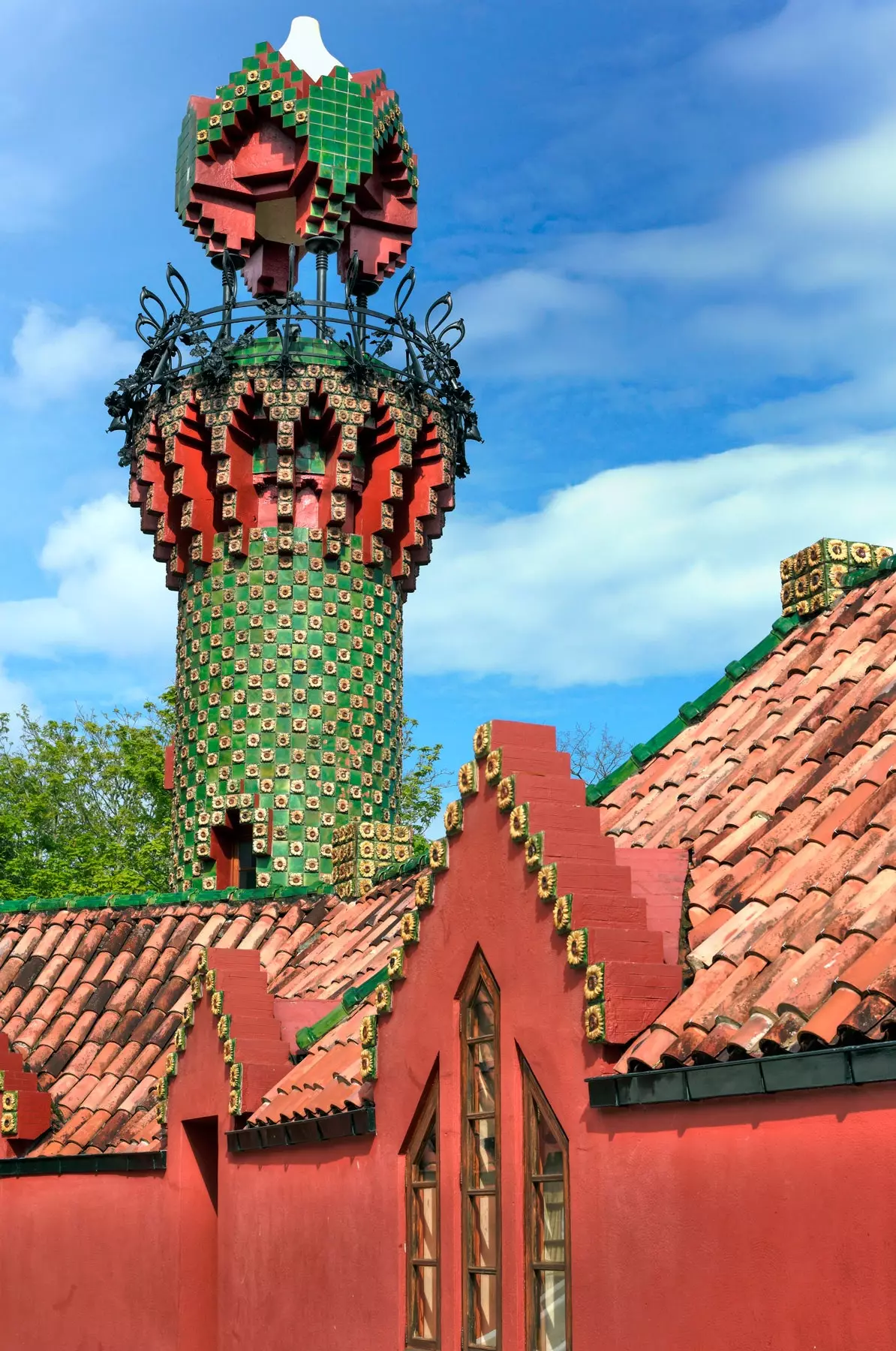
The tower rises towards the sky as if wrapped in magic
A DOOR TO HEAVEN
the huge building, the last of López's contributions to his hometown, crowns one of the six hills on which Comillas is located.
On this occasion he had it constructed with a meaning somewhat different from all the previous ones: it would be his "pious work", something with which to ensure the permanence of his name in time but that in addition –and above all–, it will help him to earn heaven.
And the person in charge of this important mission would be, once again, Martorell, that he gave to the building a most eclectic style in which Gothic and Mudejar are mixed prodigiously.
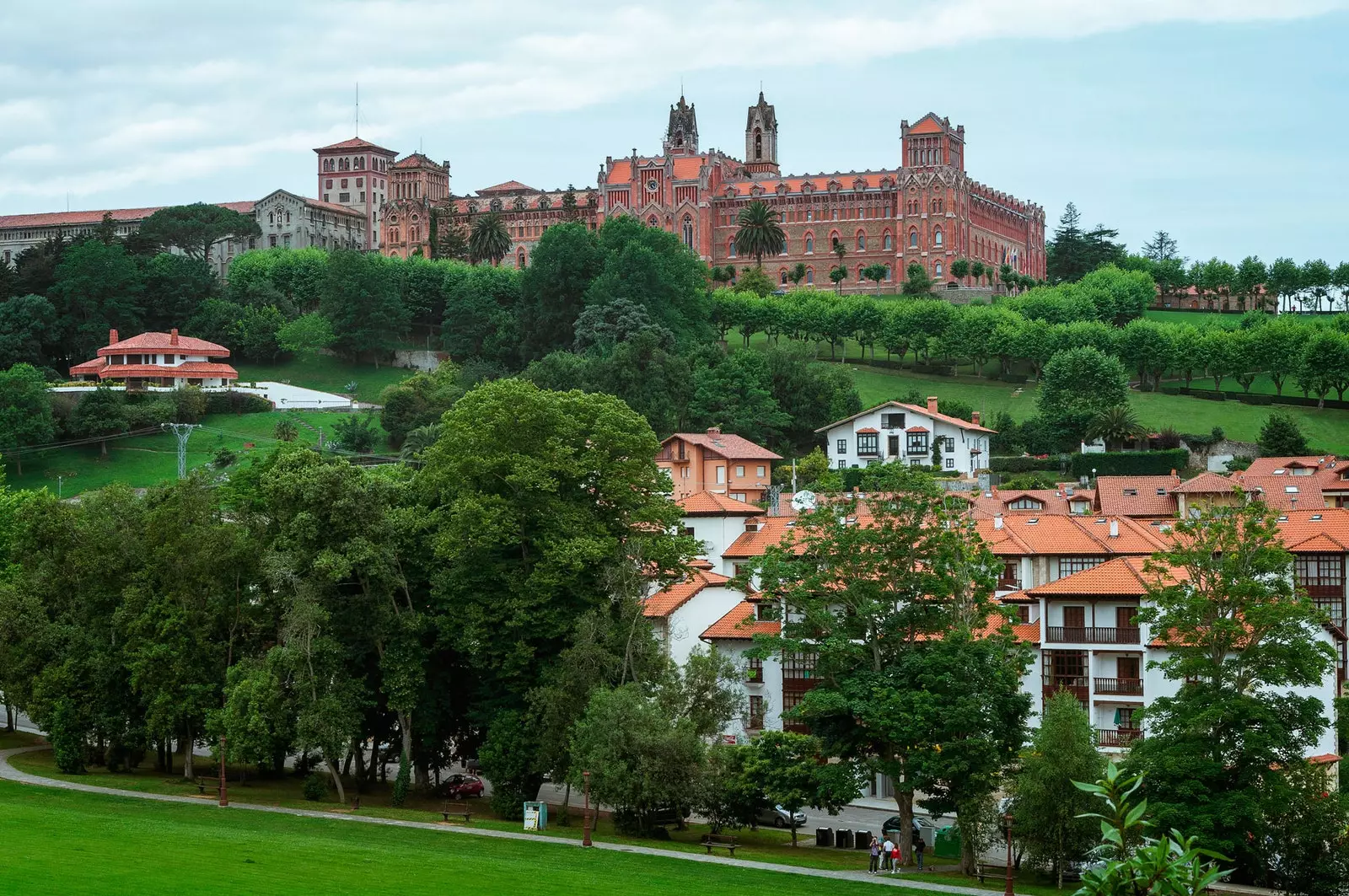
Comillas Pontifical University
What was originally going to be a teaching center for secondary education would end up being used as a seminary for the poor and, later, it would become a Pontifical University.
Doménech i Montaner He also contributed his mastery by giving a touch of life to the original building. Come on, you decorated some areas like the paraninfo, the vestibule, the staircase, the bronze door, the mosaics or the coffered ceilings. This was how modernism triumphed again in Comillas.
SHALL WE DISCONNECT?
Come on, yes, what Comillas is, above all, modernism, but it also has other benefits. So we set out to explore its narrow streets in the city center, those cobbled streets full of manor houses that remind us, once again, that we are in Cantabria.
Although just like those who do not want the thing we can deviate a few minutes to contemplate the Puerta de Moro, a garage door from 1900 whose undulating forms and construction based on stone debris can only belong to an artist. Exact: Gaudi.
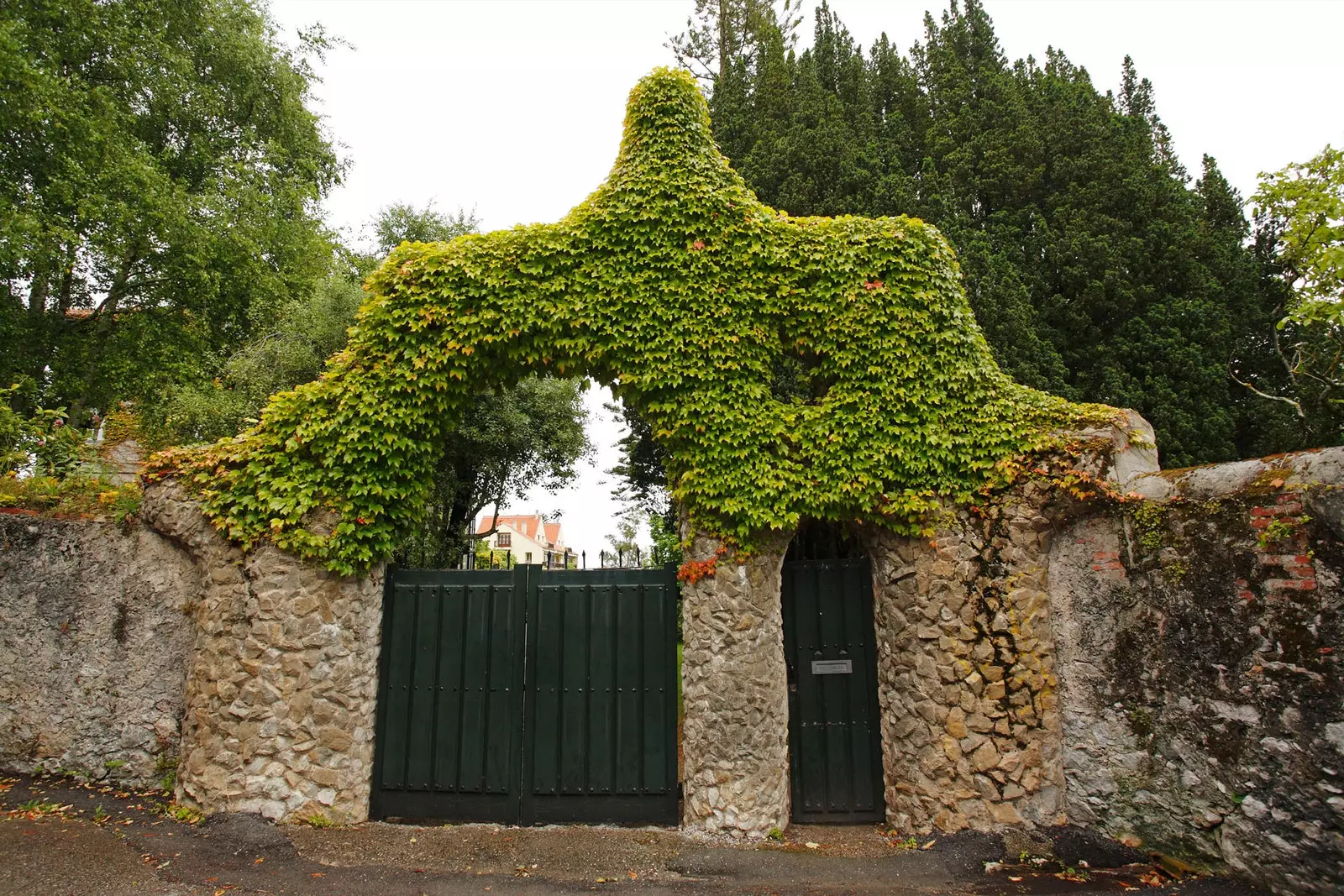
The Moro Gate, from 1900, the work of Gaudí
And now yes: to the center of town. To look at its half-ruined facades, those conquered by vegetation and those others with wooden balconies stuck in past times.
In one of the squares, another surprise –modernist, of course–: the Fuente de los Tres Caños, built by order of the first Marquis of Comilla in honor of Joaquín del Piélago -Yes, the pantheon-. Again signed by Doménech i Montaner.
And ready! After touring the historic center, designated – by the way – a historical-artistic complex, we will carry out our homework more than done: we will have discovered how Comillas became a benchmark of Catalan modernism thanks to the whim of a marquis. Pure inspiration made fantasy.
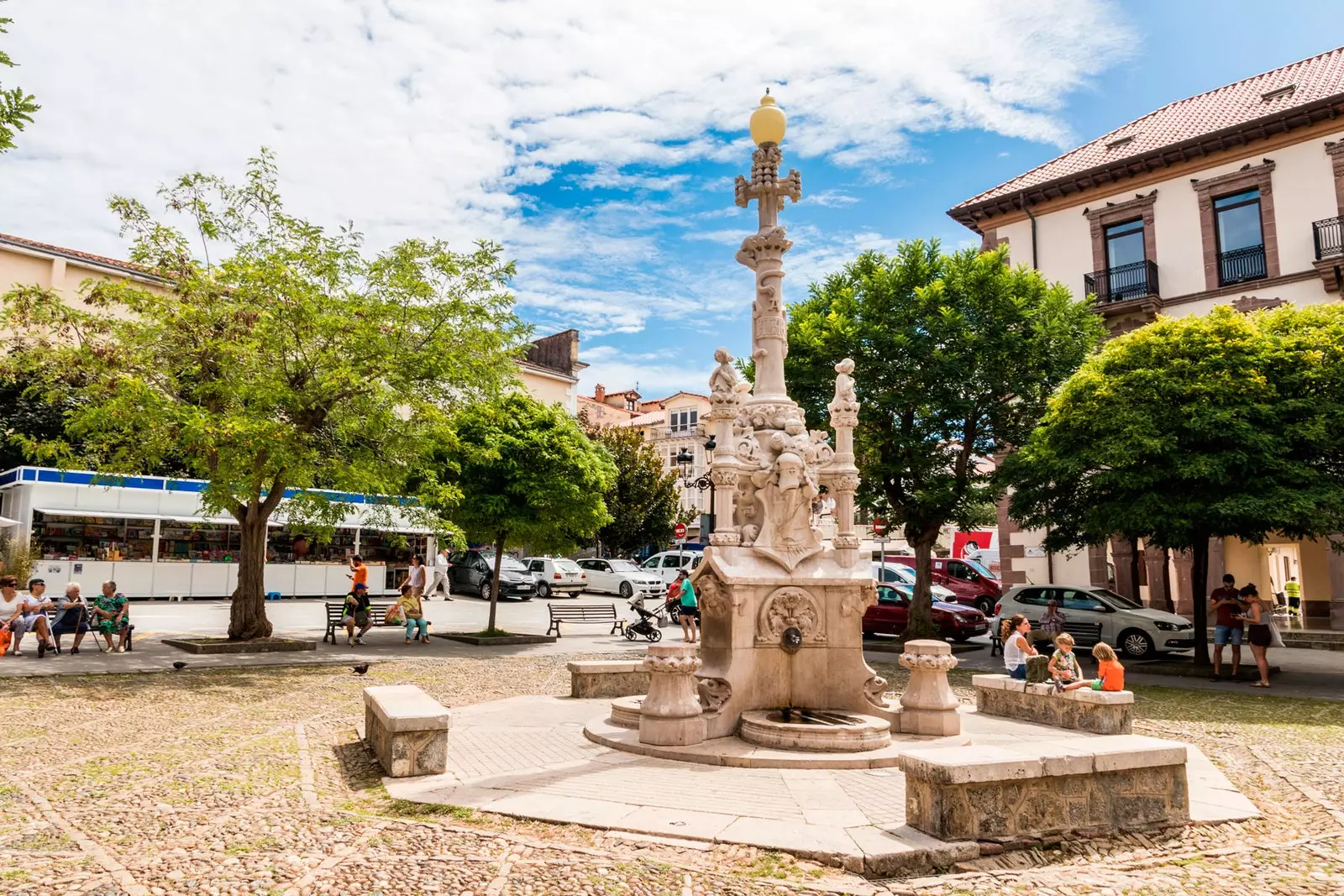
The Fuente de los Tres Caños, built by order of the first Marquis of Comilla
